Design & Technology
Intent
At Ashmead school, we want our designers, makers and evaluators to be imaginative and creative problem solvers of the future. Our Design and Technology curriculum intends to be inspiring, rigorous and highly practical enabling pupils to solve real and relevant problems individually and as a team providing a unique understanding of the world. Pupils are encouraged to consider user, purpose, functionality, design, innovation, and authenticity; designing and making something for someone with purpose. Design briefs are based on functionality and linked to relevant contexts such as home, leisure, culture and healthy lifestyles considering their own and other’s needs, wants and values. Pupils are able to draw upon and make connections across a broad range of subjects such as science, math, computing and art. We aim to provide a safe space for pupils to take risks, become resourceful, innovative and enterprising respectfully critiquing, evaluating and testing their ideas and the work of others. Learning how to cook is a crucial life skill that enables pupils to feed themselves and others affordably and well, now and in later life. By exploring the impact of past and present designs, pupils can identify the essential contribution this makes to the nation, wider world and daily life.
Implementation
Our Design Technology curriculum is planned and sequenced to ensure progression of knowledge and skills from EYFS through to Key Stage 2 reflective of the National Curriculum. We are also members of the DT Association and have used resources to continue reviewing and developing our curriculum so it is responsive to the needs and interests of our pupils.
In Early Years, expressive art and design develops pupils artistic and cultural awareness to support their imagination and creativity. Pupils explore and use a variety of media and materials through a combination of child-initiated and adult-led activities. They have the opportunities to use different media and materials to express their own ideas in original ways, thinking about form, function and purpose. Pupils make plans and construct with a purpose in mind, using a variety of resources, and developing skills to use simple tools and techniques appropriately, effectively and safely, also supporting physical development. Cooking and preparing food adhering to good health and hygiene routines is part of daily practice including snack time and lunch time, for example, alongside adult- led sessions.
In Key Stage One, pupils engage in the processes of designing and making through a variety of creative and practical activities. Pupils design, make and evaluate a range of structures, use mechanisms, and apply the principles of nutrition and healthy eating when cooking.
In Key Stage Two, pupils continue to develop their understanding of the design process using research to develop a design criterion, communicating their ideas in more sophisticated ways and using this knowledge to support the evaluation process. When making, they begin to consider, in more depth, the function and aesthetic qualities when selecting materials and components. Technical knowledge advances to reinforce more complex structures, understand and use a wider variety of mechanisms, electrical systems, and apply their understanding of computing to program, monitor and control their products.
We map the following through creative and practical activities within our Long-Term plan to compliment the progression document and the design cycle.
|
|
EYFS |
KS1 |
Lower KS2 |
Upper KS2 |
|
|
Cooking and Nutrition |
|
|
|
|
|
|
Technical Knowledge |
Structures |
|
|
|
|
|
Mechanical systems |
|
|
|
|
|
|
Electrical systems |
|
|
|
|
|
|
Technology control |
|
|
|
|
|
We actively encourage experimentation and risk-taking, allowing pupils to learn from their mistakes and refine their designs, e.g. through creating and evaluating prototypes. Growth mindset and resilience also develop encouraging pupils to learn from mistakes, apply feedback, and persevere in their design processes.
We make explicit cross-curricular links between Design Technology and other subjects, ensuring that pupils can apply and transfer their knowledge and skills in meaningful contexts. For example, pupils may design and create models of bridges to apply their understanding of forces from their Science lessons, or design and build 3D models of historical structures learned in History lessons.
Through Eco-schools we promote a sense of responsibility and consideration for the environment and sustainable design practices.
Assessment
We use formative and summative assessment strategies to evaluate pupils' progress and identify areas for further development. Pupils are encouraged to reflect on their own designs and those of their peers, providing constructive feedback to support growth and improvement. Teachers provide regular feedback and use success criteria to enable pupils to set goals for the next steps in their learning.
Impact
Through engaging in our curriculum, pupils develop advanced skills in design, technology, critical thinking, problem-solving, and teamwork. They gain confidence in their creativity and the ability to overcome design challenges. Pupils demonstrate a deep understanding of the design process and can critically evaluate their own work and that of others. We ensure that all pupils, including those with special educational needs or disabilities, are supported and challenged appropriately, allowing them to make progress. Pupil voice is valued, and their ideas and suggestions are incorporated into the planning and delivery of lessons, ensuring a high level of ownership and enjoyment. Our Design Technology curriculum contributes to pupils' wider learning in various ways. It develops transferable skills such as problem-solving, critical thinking, creativity, and collaboration, which benefit pupils across the curriculum and in their future lives. Pupils gain an understanding of the impact of design choices on individuals, communities, and the environment, promoting responsible citizenship and sustainability.







